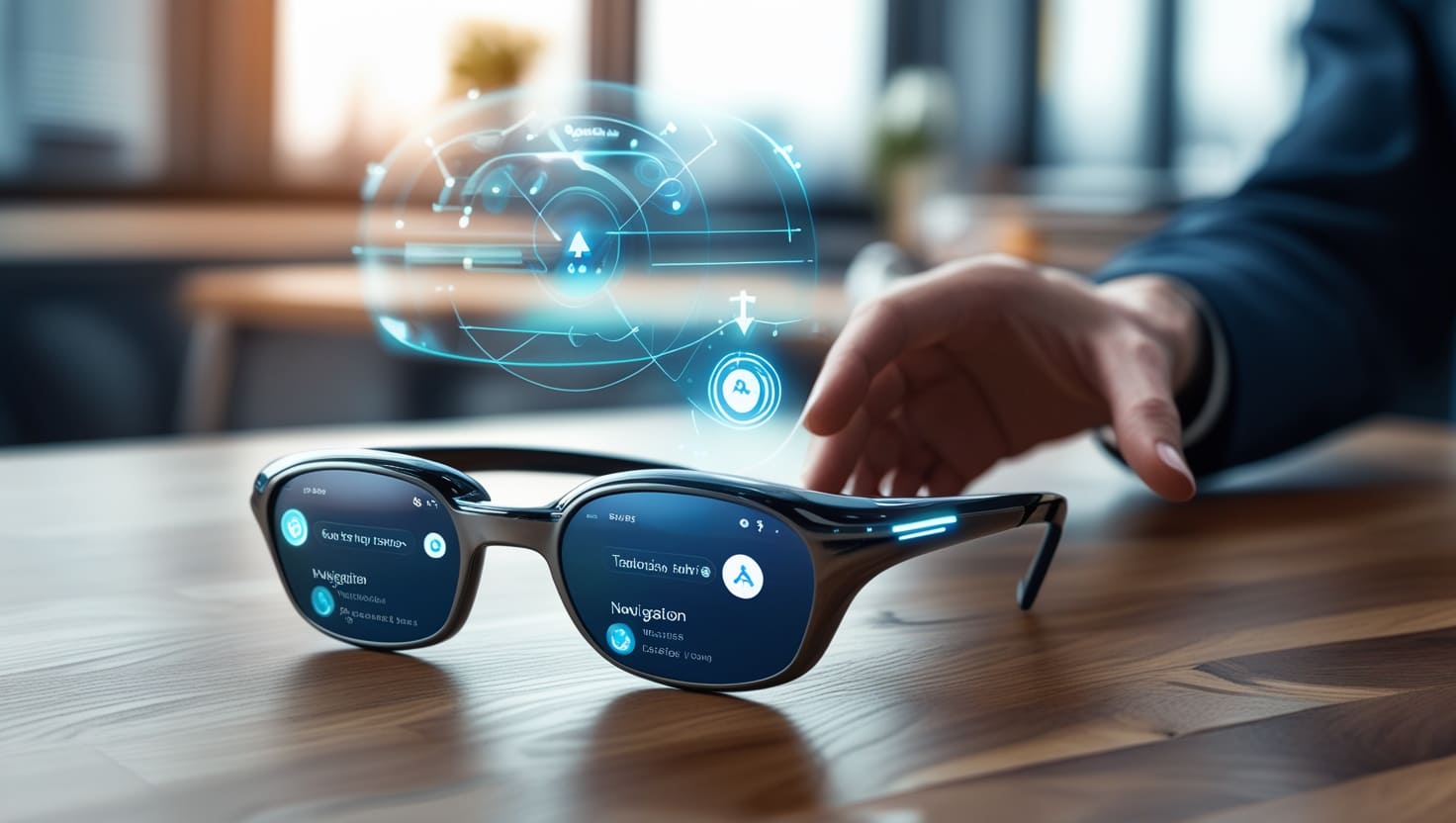In 2025, AI-powered smart glasses are no longer science fiction — they’re transforming the way we interact with the world. Blending cutting-edge artificial intelligence with sleek wearable design, these glasses provide real-time information, assistive technology, hands-free productivity, and immersive augmented reality (AR) experiences.
Whether you’re a tech enthusiast, remote worker, traveler, or someone with visual impairments, smart glasses powered by AI offer features that go far beyond traditional eyewear. This complete guide explores how AI smart glasses work, their most useful features, top models in 2025, and what the future holds.
What Are AI Smart Glasses?
AI smart glasses are wearable devices that combine traditional eyewear with built-in sensors, cameras, displays, microphones, and processors powered by artificial intelligence. Their goal is to enhance your vision, provide contextual data, and assist with daily tasks — all without pulling out your smartphone.
These glasses often support:
- Voice commands via AI assistants
- Real-time language translation
- Navigation overlays
- Health monitoring
- Live video calling and streaming
- Facial/object recognition
- Augmented reality (AR) integration
They’re designed to be lightweight, functional, and stylish, integrating seamlessly into daily life.
How AI Enhances Smart Glasses
Here’s how artificial intelligence turns ordinary smart glasses into powerful wearable tech:
1. Contextual Awareness
AI interprets your surroundings in real time — identifying objects, locations, and people — to provide relevant information hands-free.
2. Speech Recognition & Voice Control
Advanced NLP (Natural Language Processing) enables voice commands, note-taking, and interaction with virtual assistants like Siri, Google Assistant, or custom AI models.
3. Real-Time Translation
AI listens and instantly translates spoken language into captions or audio — ideal for travelers and multilingual professionals.
4. AR Overlays and Navigation
AR interfaces, powered by AI, show directions, labels, or instructions directly on your field of view.
5. Facial & Object Recognition
With AI vision capabilities, glasses can recognize familiar faces or important objects, alerting the user with discreet notifications.
6. Health & Accessibility Tools
Some AI smart glasses assist people with hearing loss, visual impairments, or cognitive challenges using real-time prompts, audio feedback, and navigation cues.
Top Features to Look for in 2025 AI Smart Glasses
- Lightweight and ergonomic design
- Transparent or color display lens
- Long battery life with quick charging
- High-resolution front-facing camera
- Noise-cancelling microphone array
- Privacy modes and security settings
- Compatibility with mobile and smart home ecosystems
- Offline functionality for travel or data protection
- AI model customization via app or desktop
Popular Use Cases in 2025
- Remote Work & Productivity
Display emails, take meeting notes, or join video calls while walking or commuting — all hands-free. - Travel & Exploration
Translate foreign languages on the fly, receive AR-guided tours, and navigate unfamiliar cities with ease. - Healthcare & Accessibility
Help the visually impaired detect objects and read signs, or assist doctors during surgery with live overlays. - Retail & Logistics
Real-time inventory management, facial recognition for security, and order tracking through AR dashboards. - Fitness & Outdoor Sports
Track metrics like speed, distance, and route, with AI offering performance feedback mid-activity.
Smart Glasses vs. Smartphones
| Feature | Smart Glasses | Smartphones |
|---|---|---|
| Hands-Free | ✅ | ❌ |
| Real-Time AR | ✅ | Limited |
| Immersive UI | ✅ | ❌ |
| Portability | ✅ | ✅ |
| Multitasking | ✅ | Partial |
Smart glasses won’t replace smartphones entirely yet, but in many cases, they provide faster, safer, and more contextual access to data — especially when multitasking or moving.
Security & Privacy Considerations
As AI smart glasses grow in popularity, users and manufacturers must consider:
- Data privacy: Are images, audio, or location data stored securely?
- Consent: Facial recognition should respect public privacy.
- Distraction: Some features may not be safe while driving or cycling.
- Cybersecurity: Ensure firmware is encrypted and up-to-date.
Choose devices that prioritize transparency, user control, and local data processing when possible.
What’s New in 2025?
The 2025 generation of AI smart glasses introduces:
- AI-generated real-time summaries of meetings and conversations
- Auto-captioning for hearing impaired users
- Emotion detection and sentiment analysis via facial cues
- Light adaptive displays for seamless indoor-outdoor use
- Battery-saving AI models that adapt to user behavior
- Integration with smart homes and IoT for controlling devices with just a glance or a nod
The Future of AI Smart Glasses
Looking ahead, expect more intuitive interactions, better battery tech, and deeper AI integrations like:
- Mind-controlled interfaces via neural sensing
- Holographic 3D AR interfaces
- Personalized AI companions visible only to the user
- Smart glasses-as-a-service for businesses
- Sustainable materials and solar-powered frames
AI glasses are on track to become a core element of personal computing, shifting us away from screens and toward immersive, ambient interfaces.
Conclusion
Smart glasses powered by AI represent a bold step into the future — where technology disappears into our surroundings and becomes a natural extension of human perception. Whether for productivity, health, accessibility, or exploration, these devices empower us to see more, know more, and do more — effortlessly.
Would you consider wearing AI-powered glasses every day? Why or why not? Share your opinion in the comments below!





